Do You Know Which Fridge Shelves You Should Store Your Food On?
Knowing where in the fridge to store different types of food is important to ensure that your food remains safe to eat. Correctly refrigerating food also helps to stop harmful bacteria spreading from raw foods to ready-to-eat foods.
Do you know which shelf you should store raw meat products on and why? Do you know where in the fridge is best suited for fruit and vegetables? What about ready meals or pastries?
In this article, we’ll look at how to store food in a fridge safely and outline which foods should go on which shelves.
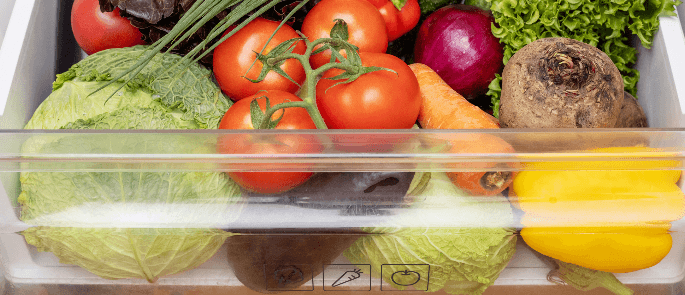
How to Store Food in a Fridge
All domestic fridges come fitted with internal shelves, a drawer and storage compartments on the inside of the door, but do you know which foods go where? If foods aren’t stored correctly, you run the risk of cross-contamination between raw or unprepared foods and those that are ready-to-eat. In the worst cases, this can cause food poisoning.
The illustration below gives an example of a full fridge, highlighting the types of foods that you should store on each shelf. Note that the diagram replicates a domestic fridge that you’d find in your kitchen at home, with the bottom shelf being a drawer, so it is not a suitable reference for commercial fridges in shops or restaurants.
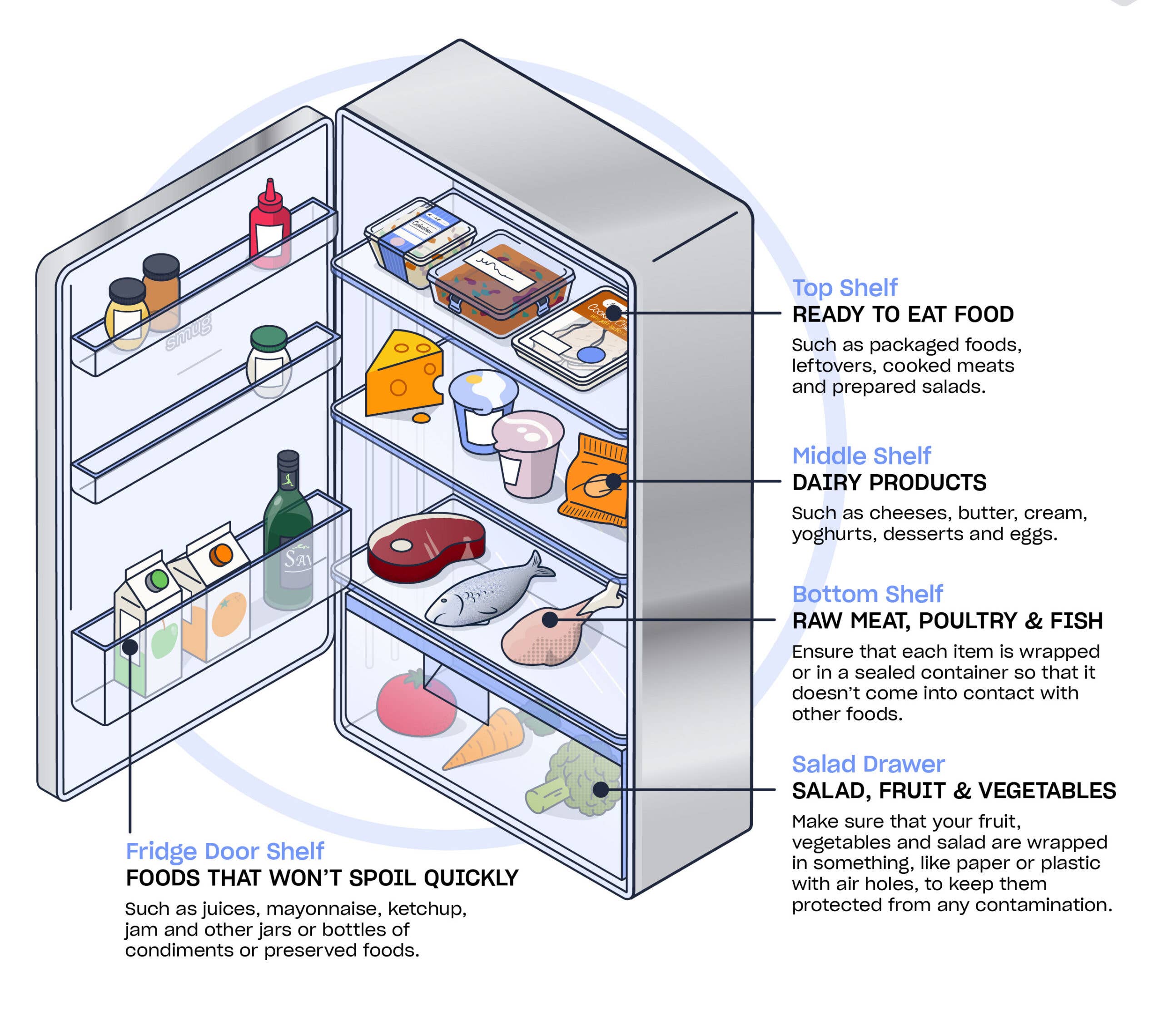
Top Shelf
On the top shelf of your fridge you should store ready-to-eat foods, such as packaged foods, leftovers, cooked meats and prepared salads. These should all be covered or kept in sealed containers to prevent contamination. Ready-to-eat foods are stored at the top of the fridge, away from raw foods, so that harmful bacteria cannot transfer from the raw food to the cooked food.
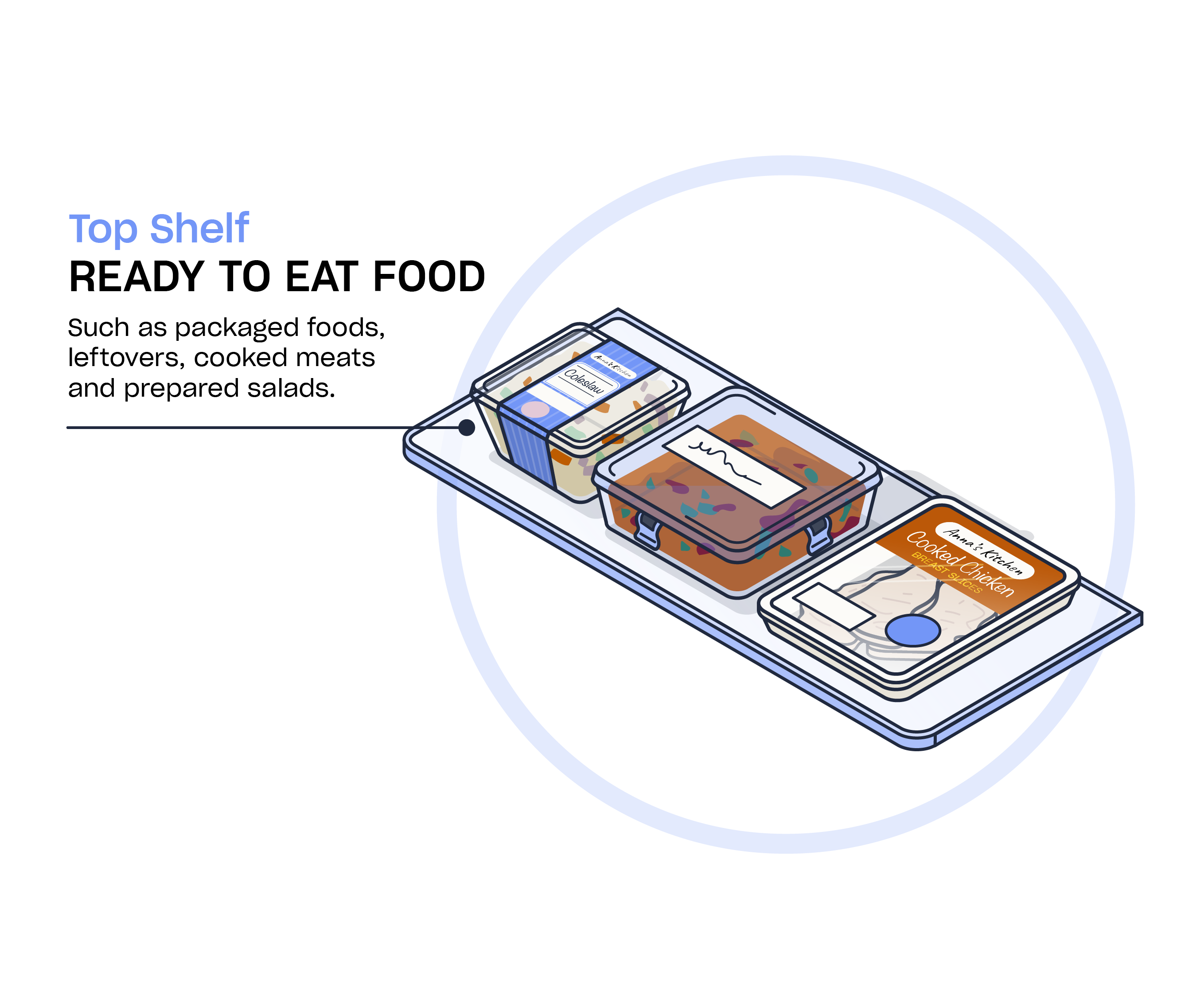
Middle Shelf
The middle shelf of your fridge is the best place to store dairy products, like cheeses, butter, cream, yoghurts, desserts and eggs. Keep cheeses wrapped or in a container to prevent them from drying out. Store dairy products in the middle of your fridge rather than the doors, as the temperature is cooler and will help to preserve them for longer. If you are interested in learning more about how to store cheese, take a look at our article here.
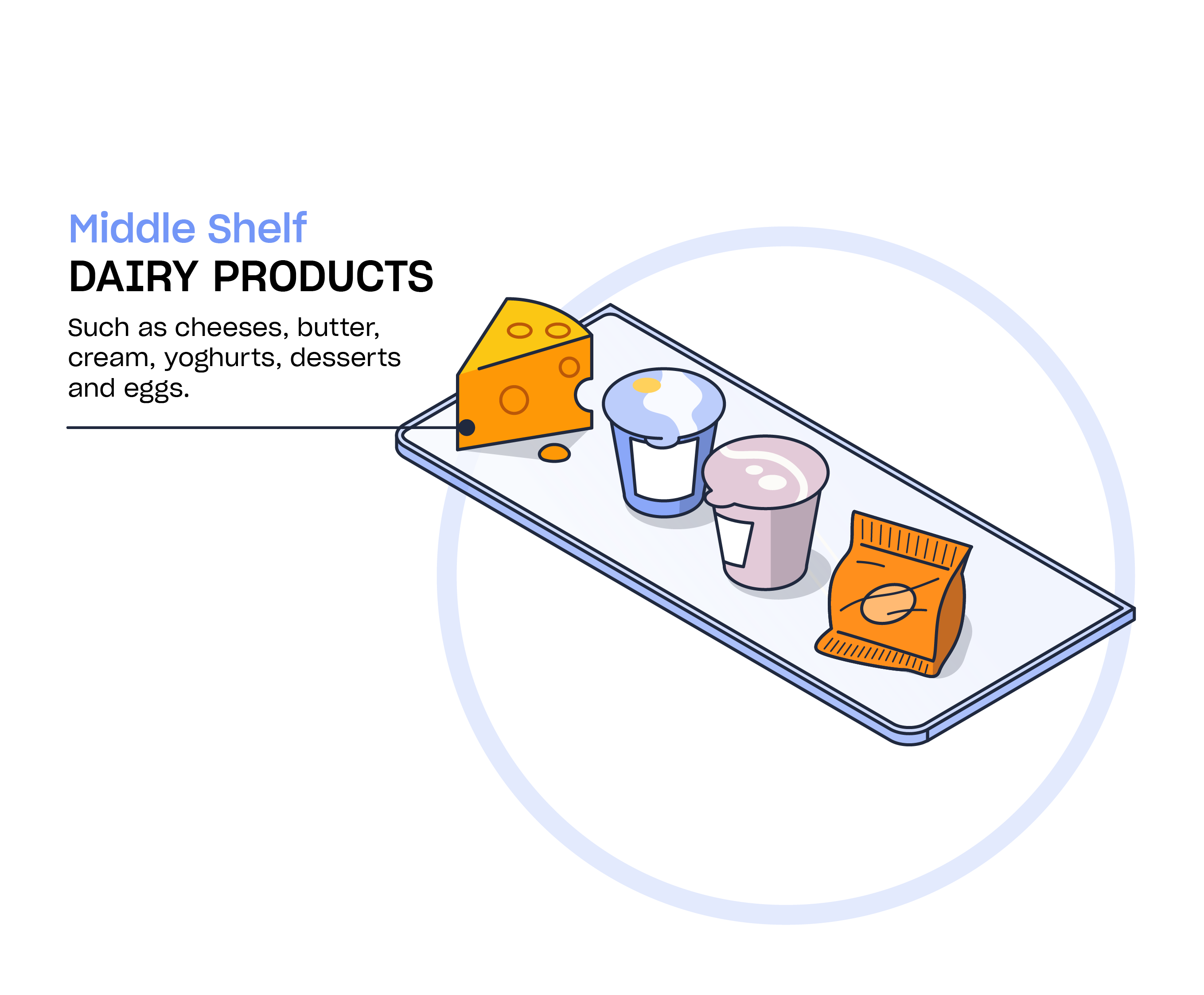
Bottom Shelf
The bottom shelf of the fridge is the coldest part of your fridge, so should be used to store raw meat, poultry and fish in sealed containers. Raw meats should always be stored at the bottom of your fridge to prevent cross-contamination – for example, if any juices (which could contain harmful bacteria) leak from the packaging, they could drip down onto food stored on a lower shelf. Ensure that each item is wrapped or in a sealed container so that it doesn’t come into contact with other foods.
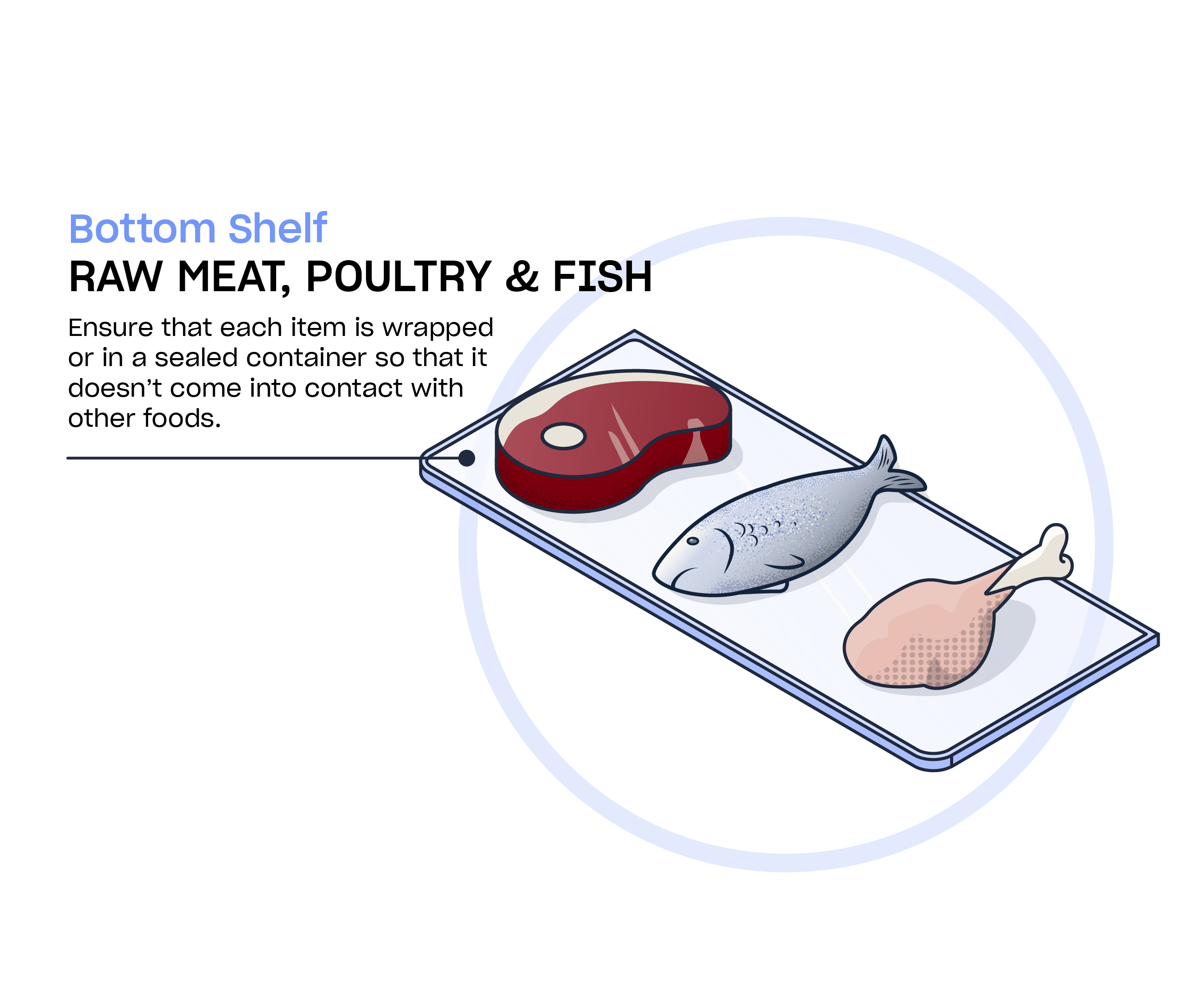
Salad Drawer
The salad drawer, or bottom shelf of your fridge, should be used to store fruit, vegetables and salad vegetables that have been washed prior to storage. Make sure that your fruit, vegetables and salad are wrapped in something, like paper or plastic with air holes, to keep them protected from any contamination. For salads and herbs, try wrapping them in a damp paper towel before storing to prevent them from drying out and keep them fresher for longer.
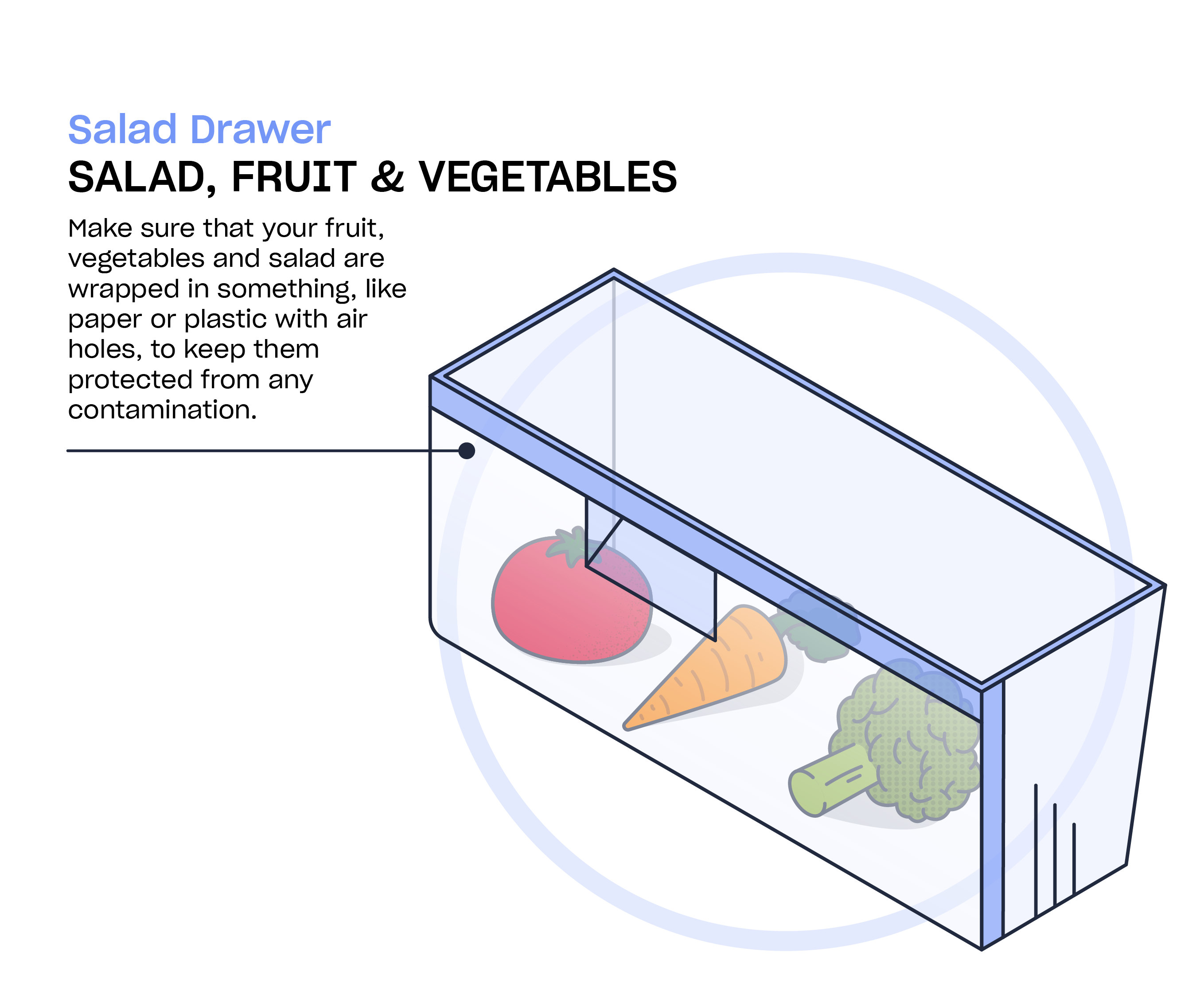
Fridge Door Shelves
The refrigerator door is the warmest part of your fridge, so should be used to store foods that won’t spoil quickly, such as juices, mayonnaise, ketchup, jam and other jars or bottles of condiments or preserved foods. These items tend to have a longer shelf-life than other, more perishable foods.
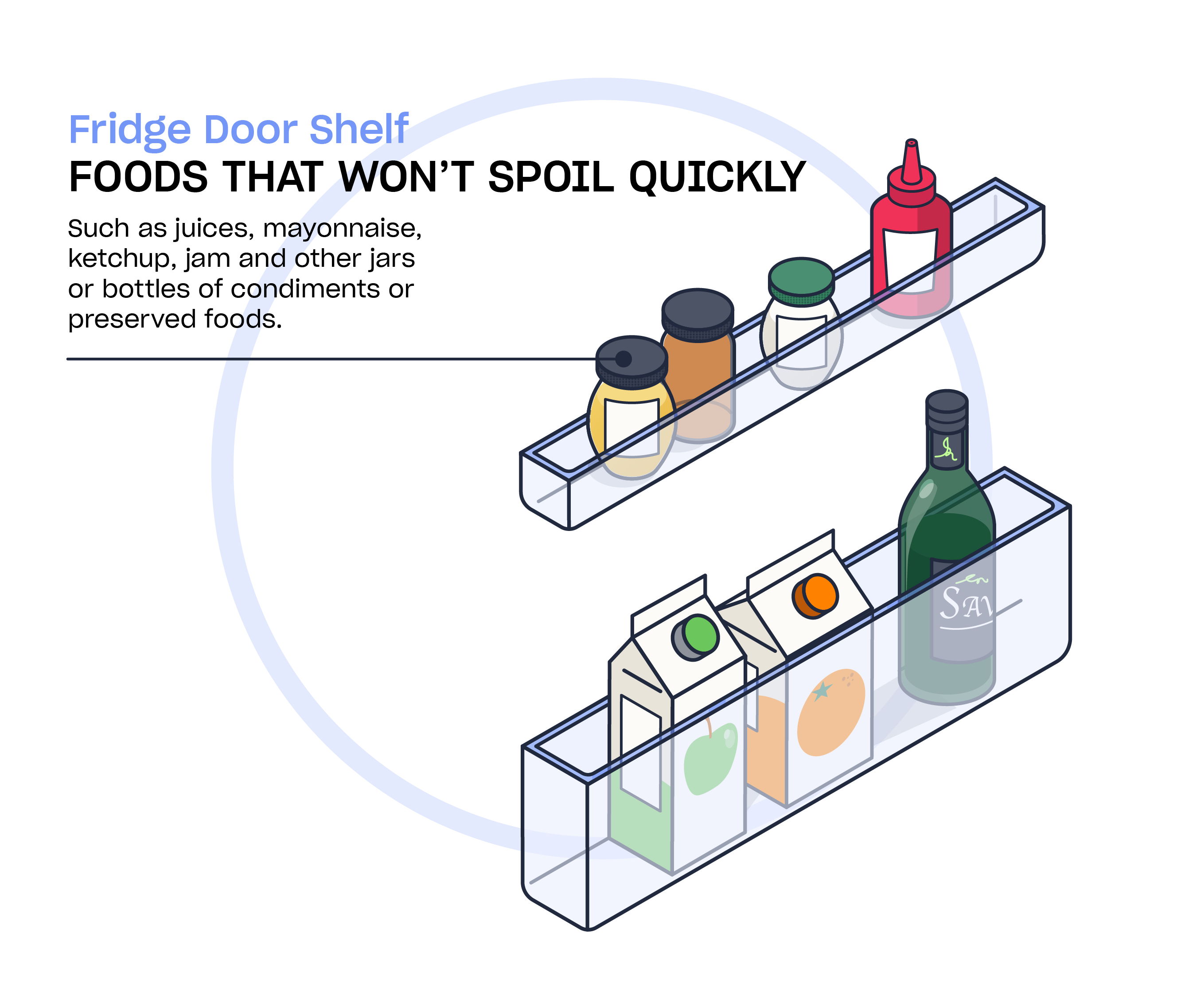
Food Hygiene Tips for Your Fridge
To keep your fridge running at its best and help keep the food stored in it safe, follow our top refrigerator tips:
- Your fridge should be set at a temperature between 1 and 5°C so that the rate of food spoilage is slowed and harmful bacteria cannot multiply. At this temperature, high-risk foods will be kept safe to eat.
- If your fridge thermometer reaches a temperature above 8°C, then turn down the thermostat to a lower setting, as you risk food entering the temperature danger zone.
- Keep an eye on use-by dates. Any food that has passed its use-by date should not be eaten as harmful bacteria has had a chance to grow and make the food dangerous to health. Foods past their best-before dates can be eaten, however, as this is only a mark of quality, not safety.
- Make sure that your fridge is never overloaded, as you are in danger of blocking the cooling unit that will chill your food or the door may not close properly. Air needs to be able to circulate around the food in order to chill it effectively.
- Newly bought food should always be placed behind the food that’s already in the fridge. This ensures good stock rotation and ensures you eat foods before they go out of date, therefore reducing food waste.
- Open cans should never be stored in the refrigerator as this may result in chemical contamination, especially acidic food like fruit and tomatoes. Instead, decant the tinned food into a container that’s suitable for chilling first.
- The best place to defrost food is in the fridge, as this allows it to slowly thaw without the risk of harmful bacteria developing.
- If you’re putting leftovers in the fridge, ensure they’re put in a sealed container and stored within 2 hours of cooking. Never put hot foods directly into the fridge. You can divide the food into smaller containers to help it cool down more quickly.
Looking to Learn More?
If you work in the food industry with a commercial fridge, then take a look at our range of Food Hygiene Courses to learn more about food hygiene and safety in the workplace.
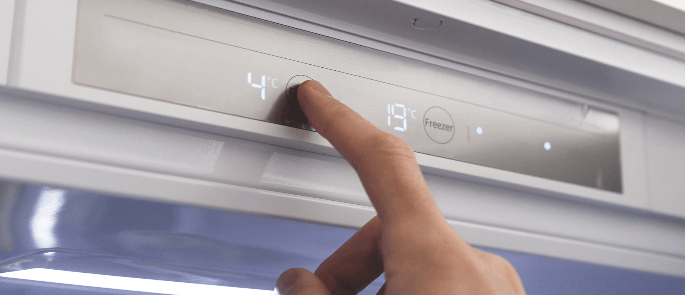
In this article, you’ve learnt how to store food in the fridge, including which shelves in a fridge foods should be stored on to keep them safe to eat. We hope you’ve found the article useful and have picked up some food safety tips to use at home!
Further Resources:
- How to Store Food in the Freezer
- How to Defrost Food Safely
- How Long Can You Store Frozen Food For?
- Can I Cook This From Frozen?
- Can I Freeze This & For How Long?
- What are the Four Types of Food Contamination?
- Answering Your FAQs About Egg Safety
- Food Hygiene and Safety Certificates







